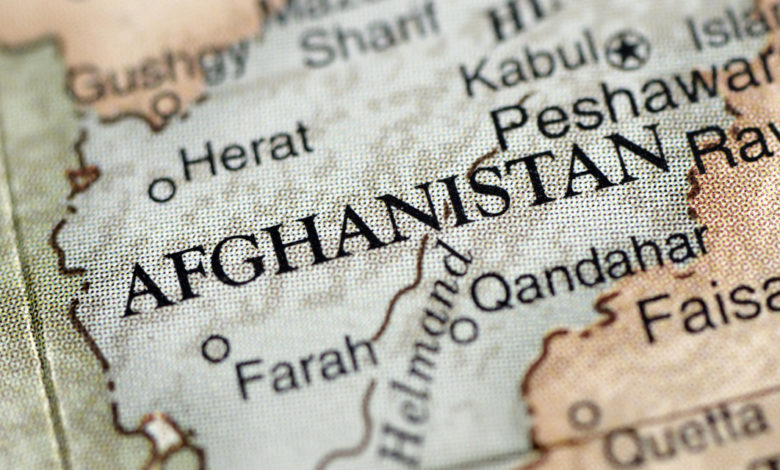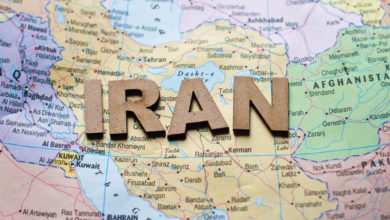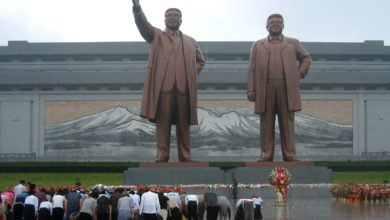Biden and The Generals: Turning Good Policy Into Bad Politics

In a brutally candid hearing before the Senate Armed Services Committee on Tuesday, two of America’s top military leaders testified that they favored keeping around 2500 U.S. troops in Afghanistan, rather than reducing the number to zero on August 31, 2021.
Neither General Mark Milley, Chairman of the Joint Chiefs of Staff, nor General Kenneth McKenzie, the head of Central Command, was willing to state outright that he so advised President Biden. Instead, they put on a master class in the Senior Advisor Congressional Testimony Game by pretending that they would not disclose the content of their private communications with the president while disclosing the content of those discussions at the same time.
Both made it absolutely clear that they did, in fact, advise Biden of their belief that a small force should remain in Afghanistan. While declining to answer direct questions about their communications with the president, the two generals unambiguously testified (1) that their position at the time was that a small force of 2500 to 3500 troops should be kept in Afghanistan and (2) that they dutifully communicated their position to the President. It doesn’t take a genius to do the math. This is one plus one equals two: the generals advised Biden to keep a small force in Afghanistan, but Biden, the ultimate civilian decision-maker, rejected their advice and decided instead on a complete withdrawal.
For many, the bottom-line headline of this testimony is something like, “Biden rejected advice of top military advisors to keep 2500 troops in Afghanistan.” But that takeaway is far too simplistic to serve as the end of an analysis of Biden’s decision. It’s really just the beginning.
One way to look at Biden’s decision to fully withdraw U.S. troops on August 31 is as a garden-variety, although monumentally consequential, risk analysis.
Any meaningful risk analysis requires weighing not only the likelihood that the risked result will occur, but also the magnitude of the consequences if it does. For instance, you might decide to take the short-cut home even though there was an 80% risk that it would be blocked by road construction if the only consequence of finding the road closed would be to turn around and go back to the longer route. The risk that you might lose a few minutes of time wouldn’t make much of a difference, so why not at least take a crack at the short-cut, even if it’s a longshot? On the other hand, you’d be reckless and foolhardy to take even a 20% risk if the likely consequence was that you would drive off a cliff that you couldn’t see until it was too late. You might not even take a 1% risk if the consequence of being wrong would be your immediate demise.
In the case of Biden and the generals, we can safely assume that the generals believed that it was more likely than not that keeping 2500 or so troops in Afghanistan would be sufficient to stabilize the Afghan government for some meaningful period of time, or at least force the Taliban to make major concessions at the negotiating table.
At the same time, the generals understood that their recommendation to keep forces in Afghanistan beyond August 31 would not be free of risk. General Milley’s blunt response to a question from Senator Elizabeth Warren went so far as to describe the risk as a near certainty:
“If we’d stayed another week or two or three, then it’s likely there would have been another attack that killed American service members. Is that what you’re saying?” Warren asked.
“I would say that that is a near certainty,” Milley replied.
Milley said such a risk — including to American citizens who remained in Afghanistan — seemed “unacceptable.”
The broader risk in question was that the Taliban would consider the failure to remove all troops by the promised deadline to be a breach of their agreement with the U.S., and that they would end their moratorium on attacking U.S. and coalition forces. If they did, those attacks might in turn require a major escalation of tens of thousands of U.S. troops over a period of years, if not decades. We don’t know whether the generals assigned a percentage to the risk of a major escalation, but we know that they recognized it.
That brings us to the second part of the risk assessment: whatever the likelihood of the risk of major escalation, what would be the magnitude of the consequences if that risk occurred?
That’s much easier to estimate than the likelihood of occurrence of the risk of rekindling active warfare between the Taliban and the U.S. A major military confrontation between the Taliban and U.S. forces would require a major escalation of American troops and prolong the forever war. The lives of thousands of U.S. troops could be squandered.
Why “squandered?”
Because our history in Afghanistan tells us that it is nearly unimaginable that sending even tens of thousands of American troops back to Afghanistan would prevent a Taliban takeover in the long run. Vanda Felbab-Brown of the Brookings Institute put it this way:
“The U.S. military presence has slowed the Taliban’s military and political gains, but not reversed them (even when American troop levels were 100,000 strong). It has no prospect of accomplishing them with 5,000 or 10,000 troops staying for another five or 10 years, let alone less. Since 2015, the U.S. approach to Afghanistan has been staying and praying — praying that the Taliban will make enough strategic mistakes to do itself in on the battlefield. It has not.”
At the end of the day, the question can’t be merely whether it was more likely than not that maintaining a small force of some 2500 U.S. troops in Afghanistan would help preserve a modicum of stability in that country, on the one hand, or lead to a major escalation, on the other. Given the lack of certainty, the more important question is what would have been the consequences if we made the wrong calculation.
The answer seems clear that the consequences of guessing wrong would have been catastrophic, whereas the benefit of guessing right might, at best, do no more than prolong the inevitability of a Taliban takeover at a horrible cost of American blood and treasure.
Biden got this decision right, even if it was poorly executed.
What is truly difficult to understand is not Biden’s decision to remove all of our troops against the advice of the generals, but his failure to own it. In an August 19 interview, ABC’s George Stephanopoulos asked Biden if any of his military advisors had told him that he should keep 2500 troops in Afghanistan:
“During the interview, Stephanopoulos asked Biden point blank: “So no one told — your military advisers did not tell you, “No, we should just keep 2,500 troops. It’s been a stable situation for the last several years. We can do that. We can continue to do that?”
Biden answered: “No. No one said that to me that I can recall.”
It is almost impossible to square Biden’s claim with the testimony of two of his top military advisors. Either Biden isn’t telling the truth, or the generals aren’t telling the truth, or Biden’s memory is so degraded that he can’t remember that he acted contrary to the advice of his military advisors. Or maybe Biden was dissembling, providing a technically correct but nevertheless misleading answer to an inelegantly phrased question. Maybe they did advise him to keep 2500 troops but didn’t say that it had been “a stable situation for the last several years.” Or something like that.
None of the possibilities inspires confidence, and Biden’s refusal to take full ownership of his decision may have turned a courageous policy decision into a disastrous political blunder.





Excellent article.